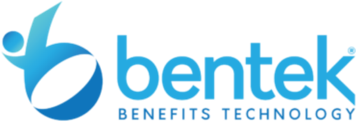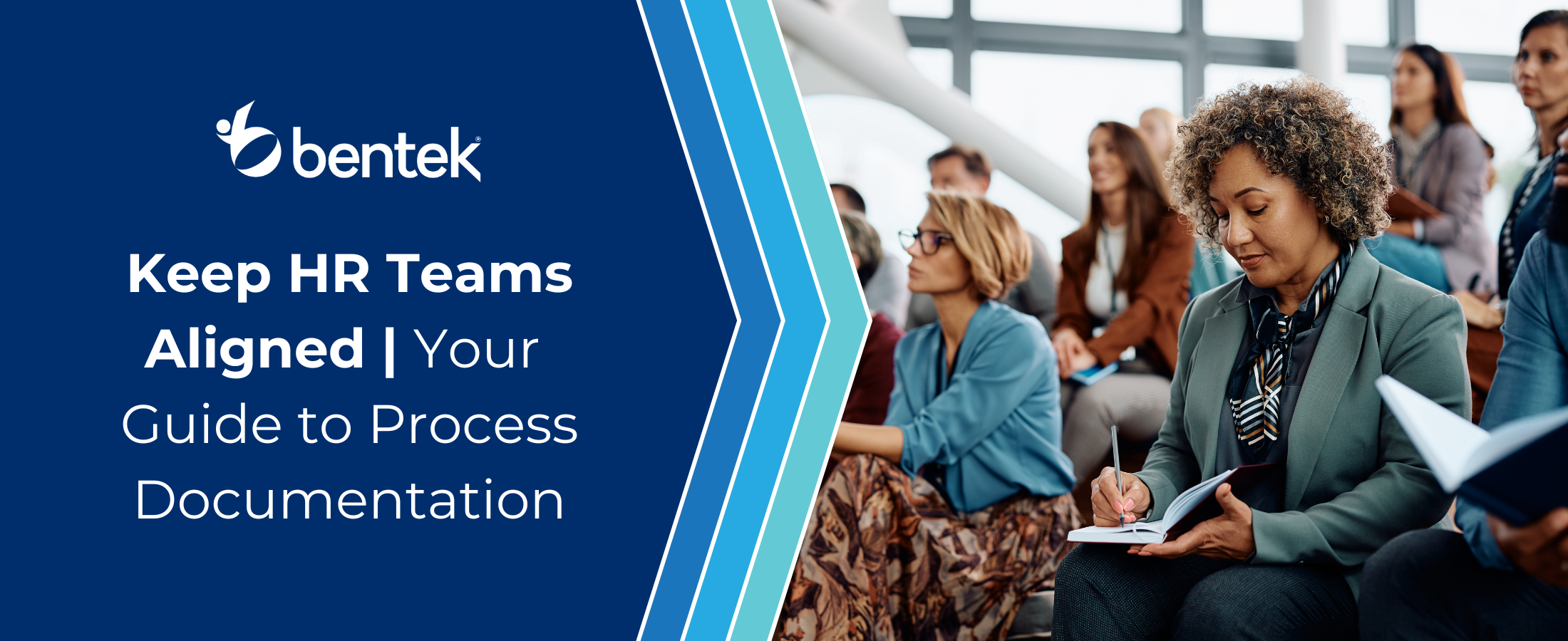Did you know that a well-documented HR process can save public sector organizations countless hours and significantly reduce compliance risks? According to Business.com, 83% of employees recreate missing documents. In an environment where precision and accountability are paramount, the absence of clear, accessible documentation can be a major obstacle to efficiency and alignment.
This article dives into the world of HR process documentation, offering a lens into its critical role within HR departments, especially in the public sector. You’ll discover the multifaceted benefits of adopting thorough process documentation practices, from dismantling information silos and enhancing team cohesion to establishing a solid, repeatable framework for managing HR tasks and benefits administration.
But how exactly does process documentation contribute to compliance, streamline communication, and bolster the strategic objectives of HR operations? Stay with us as we explore these questions and more, providing you with actionable insights to elevate your HR processes.
The Vital Role of Process Documentation in HR
A report from Forrester commissioned by Adobe found a staggering 97% of organizations had minimal or no digital document processes. In the intricate world of Human Resources, particularly within the public sector, the significance of process documentation cannot be overstated. It stands as the backbone of efficient HR operations, providing a myriad of advantages that go beyond mere record-keeping. Let’s delve into the core benefits of establishing robust HR process documentation:
- Minimizing Information Silos: By centralizing information, process documentation ensures that all team members have access to the same knowledge base, fostering a unified approach to HR tasks.
- Enhancing Team Alignment: Clear, accessible documentation aligns team members by providing a common understanding of processes and expectations, which is crucial for maintaining operational harmony.
- Establishing a Replicable Framework: With standardized procedures in place, HR departments can guarantee consistency in task execution, which is essential for quality control and training purposes.
- Ensuring Compliance: In the public sector, where regulations are stringent and ever-changing, having detailed documentation helps HR teams navigate the complex landscape of legal requirements, minimizing the risk of non-compliance.
- Facilitating Communication Across Departments: Effective process documentation breaks down barriers between departments, paving the way for seamless collaboration and information sharing.
- Supporting Strategic Objectives: By streamlining workflows and clarifying roles and responsibilities, process documentation aligns HR operations with the broader strategic goals of the organization.
In essence, the role of process documentation in HR is transformative, laying the groundwork for a more efficient, compliant, and aligned department. As we proceed, we’ll explore the essential components of effective HR process documentation, steps to create it, and best practices for maintaining alignment through its use. Whether you’re looking to refine existing documentation or starting from scratch, this guide will provide you with the tools and insights needed to enhance your HR operations.
Why Process Documentation is Essential for HR Teams and Benefits Administration
In the contemporary workspace, particularly within the public sector, the imperative for meticulous process documentation escalates significantly. This necessity stems not only from the desire to enhance operational efficiency but also to meet the stringent mandates of legal compliance and operational transparency. Let’s dissect the reasons behind the critical need for process documentation in HR and benefits administration, emphasizing its impact on efficiency improvements, error reduction, and compliance adherence.
- Adherence to Legal Standards: Public sector HR teams navigate a labyrinth of labor laws and regulations, making compliance a top priority. Process documentation serves as a vital tool in this endeavor, providing a clear record of adherence to legal requirements and protecting the organization from potential litigation or penalties.
- Operational Transparency: In an era where transparency within public sector operations is under constant scrutiny, process documentation ensures that HR tasks and decisions are traceable, justifiable, and accessible. This transparency not only fosters trust among stakeholders but also streamlines internal audits and reviews.
- Quantifiable Efficiency Gains: Documented procedures standardize HR operations, leading to significant time savings. For instance, a streamlined onboarding process, guided by clear documentation, can reduce the time HR staff spend on administrative tasks, allowing them to focus on strategic initiatives.
- Error Reduction: Errors in HR processes, such as benefits administration, can have far-reaching consequences. Process documentation minimizes these errors by providing step-by-step guides that ensure tasks are performed correctly and consistently. This not only reduces the likelihood of mistakes but also the time spent correcting them.
- Navigating the Maze of Labor Laws: The public sector is beholden to an intricate web of labor laws that can vary significantly from one jurisdiction to another. Process documentation acts as a roadmap, ensuring that HR practices adhere to these laws, thereby mitigating legal risks.
- Evidence of Due Diligence: In the event of a legal challenge, well-maintained process documentation can be a crucial piece of evidence, demonstrating the organization’s commitment to compliance and due diligence. This can be particularly valuable in disputes over employment practices, where the existence of clear, documented procedures can significantly impact the outcome.
Through a detailed examination of the essential role of process documentation in HR teams and benefits administration, it becomes evident that such practices are not merely administrative necessities but strategic assets. By ensuring adherence to legal standards, enhancing operational transparency, improving efficiency, and reducing errors, process documentation fortifies public sector organizations against the myriad challenges they face.
This foundational aspect of HR operations not only supports the day-to-day functioning of the department but also aligns with broader organizational goals, ensuring a pathway to success in an increasingly complex regulatory environment.
Key Elements of Effective HR Process Documentation
Clear Steps and Instructions
A cornerstone of any effective HR process documentation is the presence of clear steps and instructions. Breaking down HR processes into manageable, straightforward steps ensures consistency across all operations, making it easier for HR staff to follow and implement procedures accurately. Consider the onboarding process: detailed steps can streamline the experience for new hires and HR professionals alike, reducing the time to productivity.
- Consistency Across Operations: Ensuring each process follows a uniform structure that outlines every necessary step, preventing variations that could lead to inefficiencies or errors.
- Ease of Understanding: Simplified language and clear instructions make processes accessible to all employees, regardless of their familiarity with HR terminologies or procedures.
Roles and Responsibilities
Clarity in defining the roles and responsibilities within HR documentation is crucial. By explicitly stating who is responsible for each step in a process, organizations can prevent task overlap and confusion, leading to a smoother workflow and more thorough completion of HR tasks.
- Prevention of Task Overlap: Assigning specific responsibilities eliminates the risk of multiple individuals inadvertently working on the same task, optimizing the workforce’s efficiency.
- Enhanced Accountability: Clearly assigned responsibilities enhance accountability, ensuring individuals understand their duties and the expectations placed upon them.
Compliance and Regulatory Requirements
Incorporating compliance and regulatory requirements into HR process documentation is non-negotiable. Given the ever-changing landscape of labor laws, having processes that are compliant not only helps in avoiding legal pitfalls but also ensures that the organization’s operations are aligned with best practices.
- Adaptation to Legal Changes: Regularly updated documentation reflects the current legal standards, helping HR teams remain compliant amidst evolving regulations.
- Foundation for Audits: Documentation that includes compliance and regulatory information serves as a key resource during internal or external audits, demonstrating adherence to legal requirements.
Key Contacts and Resources
Access to vital information and contacts within HR process documentation supports effective management and quick resolution of issues. This includes contacts for HR representatives, legal advisors, and other stakeholders, along with resources like policy manuals, legal guidelines, and procedural templates.
- Quick Reference: Having a directory of key contacts and resources allows HR staff and employees to find information or get help when needed without unnecessary delays.
- Supports Decision Making: Easy access to comprehensive resources empowers HR professionals to make informed decisions based on current policies and best practices.
Through the meticulous integration of these elements, HR process documentation transforms from mere paperwork into a strategic asset. It not only streamlines HR operations but also reinforces compliance, clarifies roles, and enhances overall efficiency.
These foundational components—clear steps and instructions, defined roles and responsibilities, compliance incorporation, and readily available contacts and resources—are what makes HR documentation not just a requirement but a catalyst for operational excellence.
Steps to Create Effective Process Documentation for HR Teams
Effective process documentation serves as the backbone of HR operations, ensuring that all practices not only align with organizational goals but also comply with regulatory standards. The creation of this documentation requires a methodical approach, starting from auditing existing processes to regular updates and maintenance. Here’s how HR teams can develop actionable process documentation.
Conducting a Process Audit
The initial step in crafting valuable HR process documentation involves conducting a thorough audit of existing workflows. This audit aims to map out all current processes, identifying both strengths and areas needing improvement.
- Identify Current Workflows: List out all existing HR processes, from recruitment to termination, and categorize them based on their function within the HR department.
- Evaluate Effectiveness: Assess each process for efficiency, accuracy, and compliance. This evaluation helps pinpoint redundancies, bottlenecks, or compliance risks.
- Gather Stakeholder Input: Engage with stakeholders, including HR staff, department heads, and employees, to understand their experiences and suggestions for improvement.
Drafting and Reviewing
With a comprehensive understanding of existing processes, the next step involves drafting the initial documentation. This phase transforms the audit findings into structured documents.
- Create Initial Drafts: Based on the audit outcomes, develop initial documentation drafts. Ensure these documents clearly outline the steps, roles, and compliance requirements identified during the audit.
- Incorporate Visual Aids: Use flowcharts, diagrams, and other visual aids to enhance the clarity and usability of the documentation.
- Solicit Stakeholder Feedback: Share the drafts with stakeholders for feedback. Their insights can help refine the documentation to better meet the needs of all users.
Implementing and Testing
After refining the documentation with stakeholder input, the next phase involves implementation and testing. This step is crucial for ensuring the practicality and effectiveness of the documentation.
- Phased Rollout: Implement the new or revised documentation in phases, starting with a pilot group. This approach allows for manageable adjustments and reduces the impact of unforeseen issues.
- Collect User Feedback: Gather feedback from the pilot implementation, paying close attention to the usability of the documentation and any gaps in information or clarity.
- Adjust Based on Feedback: Use the feedback to make necessary adjustments. This iterative process helps fine-tune the documentation for a broader rollout.
Regular Updates and Maintenance
The final step in creating effective HR process documentation is establishing a routine for updates and maintenance. This ensures the documentation remains relevant and compliant over time.
- Schedule Regular Reviews: Set a schedule for periodic reviews of the documentation to ensure it remains accurate and compliant with current laws and regulations.
- Adapt to Changes: Be prepared to update the documentation in response to regulatory changes, operational shifts, or feedback from HR teams and users.
- Document Version Control: Implement a version control system to track changes over time. This practice not only maintains historical accuracy but also ensures users are always accessing the most up-to-date information.
By following these steps, HR teams can create and maintain process documentation that not only aligns with best practices but also supports the strategic objectives of HR operations. This documentation becomes a vital tool in enhancing team alignment, improving compliance, and streamlining HR workflows.
Best Practices for Maintaining Alignment Through Process Documentation
In HR operations and benefits administration, maintaining alignment across teams is paramount. Process documentation plays a crucial role in this alignment, serving as both a map and a compass for HR professionals navigating the complexities of their responsibilities
Training and Onboarding
Effective training and onboarding are critical for integrating new team members into existing workflows. Process documentation that is thorough and up-to-date can significantly enhance this integration.
- Structured Learning Pathways: Design structured onboarding programs that incorporate process documentation to guide new hires through the most critical HR procedures and policies.
- Role-specific Modules: Tailor documentation to address the specific needs and responsibilities of different roles within the HR team. This specificity helps new employees grasp their duties and the expectations surrounding them more quickly.
- Interactive Sessions: Supplement documentation with interactive learning sessions where new employees can engage with the material actively, ask questions, and apply what they’ve learned in practical scenarios.
Accessible and Centralized Documentation
For process documentation to be effective, it must be easily accessible to all members of the HR team, regardless of their location or the time of day. Centralizing documentation in a digital format can address this need.
- Digital Repositories: Utilize cloud-based storage solutions to house HR process documentation, ensuring that team members can access the information they need from anywhere, at any time.
- Search Functionality: Implement a system that allows users to search the documentation easily. This feature can drastically reduce the time spent looking for specific processes or policies.
- Permission Controls: Apply permission settings to ensure sensitive information remains secure while still being accessible to those who need it. This balance is vital in maintaining both transparency and confidentiality within HR operations.
Encouraging Continuous Feedback
The landscape of HR is ever-evolving, necessitating that process documentation remains dynamic and adaptable. Encouraging continuous feedback from team members is essential in achieving this adaptability.
- Feedback Channels: Establish clear channels through which team members can provide input on the utility, accuracy, and comprehensibility of process documentation. These channels might include digital surveys, suggestion boxes, or regular review meetings.
- Document Champions: Designate “document champions” within the HR team to take ownership of specific sections of the documentation. These individuals can gather feedback, propose revisions, and ensure their sections stay up-to-date.
- Iterative Review Cycles: Schedule regular review cycles for process documentation, incorporating feedback from across the HR team. These reviews ensure that the documentation evolves in tandem with changes in HR practices, regulations, and team structures.
By adhering to these best practices, HR departments can harness the full potential of process documentation to maintain alignment, enhance efficiency, and foster continuous improvement within their teams. This alignment is not only beneficial for the HR department but also contributes to the broader organizational goals of compliance, performance, and employee satisfaction.
For more articles like this, check out the Bentek Blog!




